– Welcome everyone to Wednesday Nite @ the Lab. I’m Tom Zinnen. I work at the UW-Madison Biotechnology Center. I also work for the Division of Extension Wisconsin 4-H. And on behalf of those folks and our other co-organizers, PBS Wisconsin, the Wisconsin Alumni Association, and the UW-Madison Science Alliance, thanks again for coming to Wednesday Nite @ the Lab. We do this every Wednesday night, 50 times a year. Tonight, it’s my pleasure to introduce to you Steph Tai. Steph was born in Phoenix, Arizona and went to high school in Cordova, Tennessee near Memphis. Then went on to MIT to study chemistry and stayed in Boston to get a PhD in atmospheric sciences at Tufts University. Then Steph moved to Washington, D. C. to go to Georgetown Law School and then came to UW-Madison to be on the faculty of the law school here in 2006. Tonight, Professor Tai will speak to us on In Fairness to Future Generations of Eaters and Drinkers: How Legal Reforms Can Protect Our Culinary Heritage. Would you please join me in welcoming Steph Tai to Wednesday Nite @ the Lab.
– Thank you so much, Tom, and thank you for having me here. As Tom said, the title of my talk is In Fairness to Future Generations of Eaters and Drinkers: How Legal Reforms Can Protect Culinary Heritage in the Face of Climate Change. Why talk about this? This slide shows a number of foods that are being threatened by climate change already. Why does food matter though? Numerous sociological studies have observed how food is an essential element of different cultural histories and different cultural identities in very complicated kind of ways. For example, words related to foods are important parts of everyday languages. And in many languages, we speak about certain foods as synonymous to eating meals themselves, suggesting the importance of certain types of foods as staples to the essential element of eating.
That is, we have bread in English. We have rice in Chinese and it stands for the meal. We also use certain foods for religious reasons, extending the cultural importance of our foods. One example of that is the use of the Etrog citron for the Jewish celebration of Sukkot. We also use foods for yearly ceremonial reasons, like the steamed rice zongzi, eaten during dragon boat festivals, which vary in varieties and in content from region, different villages and different regions, with some of them containing pork and peanuts, other of them containing mushrooms. This kind of variation suggests use of foods not only for celebration, but for elements of subcultural distinction and identity. Finally, we use foods to mark other important events of our lives. For example, foods associated with weddings differ from culture to culture. In Malay communities, wedding foods involve eggs, sweet glutinous rice, buttered rice, yellow glutinous rice, sireh junjung, and pickled fruit. In more Western cultures, the wedding cake is a highlight of the wedding ceremony.
And in Kazakhstan, wedding feast foods can involve horse meat, which is believed to have special curative powers. These associations highlight how foods can demarcate not only cultural identities, but also individual identities as shaped by cultural heritage and special times in our lives. Now, what will my talk involve? Well, first, I’m gonna talk about the importance of food and drink heritage. Then I’m gonna talk about the effects of climate change on food and drink. Then I’ll talk about the existing legal protection, mechanisms for protection. Although these are, as I will explain, relatively sparse. And then I’ll talk about gaps in protection and potentials for reform. So one of the things that struck me, too, as I was preparing this talk. Right before giving this talk, I attended a fundraising harvest farm dinner to raise money for Indigenous elder food box programs in the REAP food group. And there, there was a speaker who was a Menominee member and he talked about the importance of food heritage and the importance of food heritage, not only for his tribal identity, but also for the healthiness of his tribe.
That is, putting together this elder food box during the pandemic meant to them, not just putting together sufficient foods necessary for nutrition, but also for people to feel like their cultural identities were respected. And that really struck me as something that resonated with me, because I think this is important to understand in terms of why food is so important to our cultures. And so I’m gonna go through a number of slides first, just to show you why culinary heritage is important. Here’s one example, Neapolitan pizza. Neapolitan pizza is made in a sort of flame-fired oven, it’s kneaded in a certain kind of way. It has a sort of heritage about it. And you can see not only it as food, right, but also a whole process. A whole process of making the Neapolitan pizza. The next slide shows Malawi nsima, and it’s a compound name for the culinary and dietary traditions of Malawians, as well as the name of a single component of this tradition. This sort of thick porridge you see in the middle, prepared with maize flour, which you see in the upper left corner.
Nsima is prepared through an elaborate process requiring specific knowledge, from pounding the maize into flour to selecting the accompanying food and then preparing and serving it. Certain customs are followed during the meal times. For example, to regulate gluttony and promote cleanliness and cohesion, and the process of growing and storing and processing the maize is bound up with the Malawians’ way of life. And eating nsima is a communal tradition in families and an opportunity to strengthen bonds. In the early age, girls learned to pound maize or sift flour to prepare it, while young boys hunt for animals to provide accompaniments. This is a communal kind of effort, and the whole point of showing this is to show how foods not only make up a sort of nutritional supplement of our lives, but also a very strong community element of our lives. More examples. Here’s an example that may be ones that many of you would appreciate, which is just Belgian beer. Belgian beer is also considered a culinary kind of heritage, where you see people sampling, tasting the beer, but the last thing you also see in this slide is just the mutual enjoyment of the beer as a social activity. The next slide contains a Georgian wine making tradition.
In the Georgian wine making tradition, there’s some very specific kind of elements of how the wine is really processed. You have these sort of stone urns. You have a ladle for sampling things to make sure that the wine tastes uniform. You have a long history of preparation where you see generations passing down this wine making knowledge from older generations to younger generations. So again, you see food not simply as a source of sustenance, but a form of community and a form of family tradition. The next slide you see is washoku, which is a social heritage based, a social practice based on a certain set of skills and knowledge and practice and traditions related to the production, processing, and preparation of the consumption of food in Japanese society. And what you see is not only the preparation of food, you see the chefs making food for the children, and you see the children preparing washoku cuisine together, but you also see this sort of, what you can’t see necessarily in this slide is other cultural aspects associated with it. If you look at certain types of Japanese dishes, they’re actually specifically prepared to represent the seasons and represent seasonality. And so the idea is that these foods are structured not only for flavor and stuff, but also to represent our passage through time and the seasonal passage through time. So you see that represented in foods as well.
Next, we see Armenian lavash. Again, a type of culinary heritage, and you see it being celebrated at a wedding. You see lavash being exchanged as a way to represent the sort of fruitfulness that is hoped for and expected in the wedding. And so again, you see the preparation of it as some part that is important, the actual food itself as representing something, and also tasty. And then you see it being celebrated at weddings. Next, you see kimchi and the production of kimchi. Kimchi has many types. The most common is sort of cabbage-based kimchi. And you see cabbage in the fields, you see the preparation of it and the fermentation of it, and you see enjoyment of it at everyday dinners. Again, you see not only the food as a food itself, but a food as an element of communal preparation, and food as an element of cultural enjoyment of meals.
The next slide you see, and this is the last one I promise, of different foods is from Namibia. And this is the Marula Fruit Festival. And the marula fruit is the fruit that you see in the upper left corner, and the festival is a celebration that lasts two or three days between March and April, uniting the many communities of northern Namibia through the consumption of omagongo, which is a beverage made from this fruit. In preparation for the festival, men carve wooden goblets especially for this festival and make small serving boards and tools from cattle horns to pierce the fruit. Meanwhile, women make the baskets and clay pots used for preserving the omagongo, gather the ripened fruit with the help of young people, and extract and ferment the juice in clay pots for two to seven days. During this process, they discuss issues that affect them such as family problems, they sing traditional songs, they recite poems, and they share knowledge about basketry and pottery making. Processing the marula fruits brings old and young people together to share knowledge and skills, which are transmitted informally through observation and activity and participation in this. And once the fermentation process is complete, community members and guests are served the omagongo and other types of traditional cuisine. Now, what do we see in all of these slides? We see food not just as an element of survival, but an element of cultural enrichment and enjoyment and tradition. And I wanted to show you slides not only from different parts of the developing world, but also the Western world to show that food is a sort of common strand.
Although those foods are not the same, food is a common strand through all of societies. So what are the threats then to this kind of culinary heritage from climate change? This next slide is rather complicated, and I won’t go through all the individual aspects of it, although I’ll cover some of them and then I’ll also talk about some others. One thing, which is climate change threatens our food systems through just, well, simply changing the climate, right? If you have more precipitation resulting from climate change, you get additional flooding. You can also get additional kind of mold issues growing with various crops. If you have loss of precipitation, which is predicted to happen in some areas due to climate change, you can have not only droughts, which plants often need water to survive, but you also can have other elements, like increased salinity in the existing waterways. And many crops are not really saline-resistant. That is, they can only withstand a certain amount of salt in the water that they receive. You also get other things that are changed. You can see increased pests, and that’s one thing that happens. And pests can move, especially in the climates that were once inhospitable, but become warmer.
And so you can have existence of additional kind of diseases. And these are all types of things that can change. There are other things that are not necessarily on the slide. One thing that is important for many types of plants is to have certain seasonal variations, and changes in the seasonal variations means that certain kinds of growth processes won’t be triggered. So one example of that not shown here is the Georgia peach. The Georgia peach is currently possibly being threatened by climate change because it turns out that Georgia peaches and peaches in general need a certain number of nights a year that go below a certain temperature. The reason why is that going below that certain temperature a year triggers their dormancy mechanism. That is, this is a mechanism whereby peach trees go dormant and don’t expend as much energy in growth and a lot of other kinds of things that they would have otherwise expended energy on. Now, how does this affect the peach? What it means is that the peach trees, due to the lack of days or nights which dip below a certain temperature, don’t go dormant and thus have fewer energy reserves for the peaches. And so fewer peaches can be harvested.
And the peaches that grow don’t have the sweet flavor that we associate with Georgia peaches. And so this is just one example of how climate change can affect not only the availability of particular types of crops, but also the flavor and taste of particular types of crops. Other things not on the slide, too, include some transportation aspects. So transportation can be something that maybe in the Western world where we have refrigerated trucks, we’re not so concerned about, but in many areas of the developing world, you see transportation issues being a major problem because of spoilage, spoilage from the transportation from the farm to the market or to people’s tables. And so the increase in temperatures resulting from climate change can lead to additional spoilage issues and other issues such as that. Other kinds of things, too. They’re not quite so evident in this slide is just preservation kind of issues. That is, especially with many different types of traditional forms of preservation, be it preservation of malt barley in the form of beer or preservation of fruits in the form of fermented marula fruits, or jams require or have temperature-sensitive processes. And to the extent that climate change is changing that, changing the sort of seasonal variations and moisture, that can also threaten the production of not just the farmed foods, but processed foods, such as traditionally processed kind of foods. One example of this that I personally encountered was with the making of oyster sauce in Hong Kong.
Oyster sauce is a sort of slightly sweet, but also very umami flavored kind of sauce that involves oysters, right? And the earliest oyster sauces were just sort of fermented out in the fields. Now there’s much more temperature-controlled, and it’s found to be necessary because of concerns related to climate change affecting the average temperature to which the fermentation process is exposed to. And so you see yet another example of how climate change can change, not only the availability of various types of crops, but also the availability of many types of foods and also the flavor of those kinds of foods. Things fermented at different temperatures can change their flavor profiles sometimes in great ways, but sometimes in very unpleasant kind of ways. And so when we think about traditional cultural foods, we have to think not only about the availability of the food itself, but the flavor of the food itself. Does this chocolate taste the way that we maybe expected the chocolate to, et cetera? Wine is an area that is greatly affected, and it’s especially affected in terms of all the various areas of their processes. And I’m going on about wine a bit because I’ve been working on some research on how winemakers are attempting to adapt to climate change. So in terms of, and it’s also a good example of the very in-depth ways in which climate change can affect food and drink. So one example is in the crushing and pressing processes. That entire process, especially traditional processes such as in the Georgian wine photo that I showed you earlier, they’re very specific types of sort of microbial, temperature, and humidity issues.
Issues that especially if you have a long-standing tradition that has developed over time, that’s responsive to a particular climate, can be quite disrupted. The same thing goes for the fermentation process. Microbial, temperature, and humidity issues related to climate change can change the fermentation process and lead the fermentation to taste especially different. There’s also the clarification process, right? That’s how you get to have clearer wines. And that, too, is very sensitive to not only temperature and humidity, but also the availability of particular things used to clarify wine, which do vary from different traditional practices to different traditional practices. And finally, there’s the aging and bottling process, which is also quite dependent on temperature and humidity issues, and also availability for example, of cork, which the supply of which is being somewhat threatened already by climate change. There’s other aspects, too, that are not fully covered in this slide. One of the things associated with climate change, especially in say, the western United States, is the increase in forest fires. And it turns out that even the smallest amount of ash and smoke can greatly affect the flavors of wine. And so winemakers in Napa Valley, for example, are understandably concerned with climate change, especially the increasing wildfires in California.
And so there’s different effects of transportation, different effects of preservation, and sometimes also just, if you go further into the food system process, there’s also just cooking and preparation of food. Now what’s happening now? Already we are seeing the effects of climate change on the availability of foods and on the flavors associated with foods. The berry shown in this photo is a berry that is used by many Native peoples, and it’s a traditional berry that relies upon a certain amount of cold temperatures to grow, which seems strange, seems counterproductive, counter-intuitive, because we often think of temperature as leading to additional growth, but it turns out that many species have evolved so that they’re adapted to particular types of climate. And so the availability of these wild-gathered berries is becoming lower and lower. Here’s another example that’s already being threatened, maybe a more familiar kind of example, which is coffee. Coffee is fairly temperature-sensitive, coffee beans are fairly temperature-sensitive, and we’re already seeing the need for coffee farms to have to move from place to place, to find places with adequate growing seasons for coffee. Not only, though, is the coffee availability itself starting to be threatened by climate change, but the flavor profiles can be changing. As you imagine, different types of coffee varieties are adapted to particular types of growing seasons, adapted to particular types of area to grow, and changes in that can lead to changes in the actual flavor profiles of the coffee. We talk a lot when we talk about wine as sort of terroir, the sort of flavor of the land being reflected in the grapes grown and the wine produced. Well, coffee has similar kinds of aspects, as well.
And to the extent that coffee can’t be grown in the same areas where they were formerly grown, you’re going to change the sort of terroir of coffee. The next slide shows another thing that is dear to many of us, which is chocolate. Again, a type of food that is fairly temperature-sensitive in terms of growth, and also very seasonally dependent in terms of growth. And so one can imagine that not only will the supplies of chocolate be changed as we see shifts in growing seasons in various areas, but also, the flavor profiles of chocolate can be changed. To those who are chocolate aficionados, which I’m not, you see single-variety chocolates in the grocery store. That is likely to not have a stable flavor after a while, as you see rapid shifts in climate change the growing seasons of these different types of foods. The next example is, again, wine. And I already explained how climate change can be especially threatening to wines if you’re thinking about wines as having different types of unique aspects, that is if you’re thinking about like Chardonnays as being distinct in flavor, in terms of growing region from growing region, this is likely to change given the sort of changes in climate to those very regions themselves. So what are our existing legal responses? What do we have in terms of types of protections for these foods? Well, there are some legal responses and I’m gonna talk about these, but also explain why they’re relatively inadequate for addressing something that is a global threat, such as climate change. First, there’s the UNESCO Intangible Cultural Heritage Program, and I’ll talk about what that is.
Then I’ll talk about the International Treaty for Plant Genetic Resources for Food and Agriculture. And I’ll talk about what that is, too. And then I’ll talk about country-level and private-level responses using wine as an example. So what is the UNESCO Intangible Cultural Heritage Program? It’s a program by the UN to protect what are called intangible cultural heritage through a nominations process. All of the things that I showed you in the earlier part of the slides about various foods and drinks that are part of culinary heritage, these are all listed as under the UNESCO Intangible Culinary Heritage Program. So the Belgian wine. . . The Belgian beer, the Neapolitan pizza, washoku. All of that are things that have gotten listed through this Intangible Cultural Heritage Program.
They have two different kinds of lists. They have what’s called a representative list, which is a list of things that are representative of that culture. And so all of the foods that you saw were ones that fall under this representative list. And then there’s also available the urgent safeguarding list, and no foods or drinks have been listed yet. Although I would argue that given the rising threat to many foods due to climate change, some foods should be listed in this list. The next slide talks about what safeguards the UNESCO Intangible Cultural Heritage Program provides. You can imagine that this is a program designed to try to protect these intangible cultural heritages, and so it should have something to try to protect them. And so what it lists in the program is that countries must take necessary measures to ensure the safeguarding of intangible cultural heritage present in its territory. And at the international level, the convention creates an international program designed to help protect this kind of heritage, and then also creates some kinds of funds for this protection. Now in many contexts, this is fairly adequate.
So other things that are listed as intangible cultural heritages under the UNESCO program includes things like traditional dances or traditional festivals, or other things that can be still conducted in the face of climate change or not conducted in the face of climate change. The threats often are more educational, that is, there’s a loss of say a language or a loss of people who remember the dance, there’s losses of that. And so many of these necessary measures in the past have included things like having educational program or having documentation or things like that so that this heritage can be preserved. For larger kinds of changes, though, such as threats due to climate change, you can imagine that a greater response is necessary and there’s not much in the UNESCO program for those kinds of safeguards, unless you envision that the countries that must take necessary measures to ensure the safeguarding of intangible cultural heritage present in its territory actually try to diminish the effects of climate change, which is not something that we see being done through this program. Yes, there are international efforts to minimize fossil fuel emissions, but it’s not something that’s been contemplated within the construct of this program. Now, what other kinds of necessary measures are there? There is say, the identification of intangible cultural heritages that exist in the territory. So for all the foods that were listed, part of the whole process of complying with intangible cultural heritage program is seeing what has, how much Belgian beer is there, who are the traditional Belgian beer makers, et cetera. Adoption of appropriate policies. And many of these in the past have been policies to say, protect a traditional dance, to provide educational programs, et cetera. For foods, for example, with Neapolitan pizza, some of the necessary procedures have also involved formalizing what counts as Neapolitan pizza, publicizing Neapolitan pizza to not only the Italians who already know about it, but also around the world.
These are all things that have been included as part of the compliance process with this cultural heritage program. And then promotion of these kinds of cultural heritage. The idea is to provide some avenue whereby these intangible cultural heritages are preserved, both for the people who have been traditionally enjoying them, but also for the remainder of the world. There are aspects for international cooperation. And one might imagine that this could be used for food and is starting to get used for food a little bit. So one of the parts that the program requires are studies concerning various aspects of safeguarding. So what kinds of things need to be safeguarded, how it can be better safeguarded, et cetera. Provision of experts and practitioners. So providing experts, for example, in terms of dances, basically sort of protecting those who have been trained in that form of dance and allowing them ways to further convey that dance to future generations. Training of all necessary staff, if necessary.
This can be especially for intangible cultural heritage that involves music, and some of it does, training folks to be knowledgeable about that form of music. Elaboration of standard setting and other measures. I mentioned that that has been going on with Neapolitan pizza so that when we say Neapolitan pizza or say, when we say Belgian beer, it has an actual concrete meaning beyond someone just sort of slapping a label on things. The creation operation of infrastructures. And this can be again for musical heritage, for food heritage, all of that. Supply of equipment if necessary. All of this is part of international cooperation so that countries are obligated to help other countries to preserve intangible cultural heritages within their domain. And then other forms as appropriate. Again, allowing for some form of flexibility. And so you can see this as a forward-looking effort to protect many types of intangible cultural heritage.
Like I mentioned, initially, when the UN created this program, it was focused more on sort of the loss of traditional ways such as dances, music, artistic methods, et cetera, and artistic methods versus art. Because the idea is that these are intangible, these are not things. But, you know, foods began to be listed. And again, for the reasons that I mentioned before, which is that foods are such an important aspect of our cultural heritage. But there are weaknesses, which is the lack of listing of certain foods as a need of urgent versus representative protection. There are already many foods that are being threatened by climate change, but are not regarded yet as urgent. And likely, the lack of listing of certain foods is due to the listing process itself. That is, once a country lists something as an intangible cultural heritage in need of urgent safeguards, they’re obligated to do more things to try to actually protect those urgent protection, those listed on the urgent protection program. And it’s hard to do in climate change. If say, especially for a single nation to do.
That is, say that you’re talking about coffee, which is already under threat due to climate change. If you take one country and they list coffee as an intangible cultural heritage and the threats to that coffee are due to threats that arise to fossil fuels that arise around the world, then you can imagine that having a trigger, right, a trigger for additional protections by that country itself is not really going to address that threat. And so there’s a concern that by voluntarily asking for a listing of something that is in need of urgent protection, even though it might be, in fact, in need of urgent protection, a country is not willing to necessarily list that because it might be forced to undertake obligations that it may feel are both ones that they cannot do alone or ones that they simply cannot do. Moreover, the funding for this program is insufficient for system-wide change. As I mentioned before, it was initially developed for the loss of traditions, such as music, or traditions such as forms of art, traditional dances. And for that, there’s sufficient funding for that. One might argue that it’s still not totally sufficient funding, but it’s on the right scale. For system-wide change such as addressing some large existential threats such as climate change, it’s really completely insufficient. Then there’s a lack of consideration of ingredient quality versus quantity. Although many of these foods that are listed as representative foods, for example Belgian beer, Georgian wine, to the extent that they are regarded as being under threat for the purposes of the UNESCO Intangible Cultural Heritage Program, it’s really just the loss of that food itself, not the loss of the flavors associated with that food, et cetera.
It doesn’t go into that kind of fine-grained analysis. And so, under this, under this program, arguably coffee could be preserved at, or wine could be preserved at a sort of similar amount of volume or something a year. Maybe Georgian wine would still be produced at the same volume a year, but it would be of significantly different flavors and perhaps even worse flavors than at a time when Georgian wines were produced without threats of climate change. So if this is an insufficient instrument for protecting foods, what else is there? Well, there’s also the International Treaty for Plant Genetic Resources for Food and Agriculture. The objective of it is the conservation and sustainable use of all plant genetic resources for food and agriculture and the fair and equitable sharing of the benefits arising out of their use, in harmony with the Convention on Biological Diversity for sustainable agriculture and food securities. The motivation behind this international treaty was also not particularly related to addressing threats to the available plant genetic resources as a result of climate change, but rather threats due to biopiracy. And so I’m gonna sort of step outside of my talk a little bit and talk a little bit about those threats from biopiracy. This is the concern for many agricultural kind of nations or rural nations that countries from Western nations are going to go into these areas and basically steal their resources and patent them in ways that the economic enrichment won’t be felt by the countries themselves that had those plants. And so this treaty was passed to deal with biopiracy in general. Although there are some elements that one can read as potentially being useful for preserving foods in the face of climate change.
So what are the requirements for countries under this international treaty? So they first have to survey and inventory their plant genetic resources for food and agriculture and the threats to them. Positive, especially in light of climate change, it at least provides some kind of informational requirement for countries to understand the effects that climate change might have since it does pose a threat to these plant genetic resources for food and agriculture. They have to promote the collection of these plant genetic resources and information on threats to their use. They have to promote and support farmers and local communities’ efforts to manage and conserve these plant genetic resources. They also have to promote conservation of these resources. So that’s another thing that under the obligations of the International Treaty for Plant Genetic Resources for Food and Agriculture, each country must do. They have to cooperate to preserve these kinds of resources, and they have to continue to monitor the maintenance of these resources. Now, what does this mean in terms of tools that countries can use? To step outside this a little bit, I need to explain why these international instruments, these international treaties set forth particular types of tools. Part of that is to give notice to different countries that these are things that they can consider as something that they should be doing. Maybe give notice that perhaps they should be doing these things, but also give them the flexibility to do these things.
This gets into some sorts of realms of world trade law that I don’t want to get into, but the short answer of it is that sometimes things, if they’re not addressed as available tools in treaties, can be regarded as illegal restrictions on free trade. And so by having these available measures in this International Treaty for Plant Genetic Resources for Food and Agriculture gives a green light to countries to adopt these things. So things that they can use to try to protect these plant genetic resources either from threats of climate change or from other threats associated with those crops are they can adopt agricultural policy measures, promotion of different types of crops, research into different types of crops, et cetera. They can do research on conservation. They can promote plant-breeding efforts. They can promote the expanded use of local and locally-adapted crops, varieties, and under-utilized species. They can support a wide range of farm management tools, and then they can review all sorts of other stuff in terms of threats related to the plant genetic resources. Now, there are weaknesses in this, although in some ways, I mentioned that this is a positive treaty in the sense that it at least requires countries to surveil their various plant genetic resources for food and agriculture and figure out what the existing threats are, and figuring out what existing threats are is the first step in terms of addressing those threats. It’s mainly focused on providing access to plant genetic material despite potential intellectual property rights claims. To the extent that the treaty deals with climate change, it’s more focused on protecting agricultural research and traditional agricultural products that are especially resilient to climate change impacts versus the ability of the treaty to protect those plant genetic resources from being threatened themselves due to climate change.
So to go back to the previous slide, one thing that can be done to address threats of climate change under this international treaty is research on say, climate resilience for plants, breeding various plants so that they are resilient either to changing temperatures, to changing precipitation patterns, to changing seasonal patterns. But it doesn’t compel a country to particularly address the threat itself, the fact that climate change provides external threats. It’s more of an adaptation tool rather than a threat-addressment tool. So what other kinds of elements are there available for protection? And I’ve used wine as an example of country-level and private-level responses to climate change. So the context is that for many wines, they have different legal requirements in different countries for regional designation of wines. Why do we have regional designation of wines? There’s a certain expectation of taste and quality from certain kinds of regions. When you hear Napa Valley wines, they get a markup in stores because they’re presumed to be a higher quality of wine with also a certain kind of expectation in taste. Same thing with Bordeaux wines. But climate change affects the use of these labels by challenging the growing choices and processes. You can imagine that the same grape variety that’s used in a certain kind of climate, if that climate is completely different in say 10 years, that variety will not be as responsive.
So what do we have in the United States? We’ve got two different sets of statutes. We’ve got the federal statute, which deals with the establishment of American viticultural areas so long as a certain percentage of the grapes are derived from that region. The AVAs must be more, though, than just a simple geographical region. They also have to contain distinguishing features such as similar climate, geology, soils, and physical features. We also have trademark protections for these different regions. So these labels such as Napa Valley or Paso Robles or whatever can have trademark protections. The idea of using all of these protections is to provide consumers with some kind of expectation. So the consumers can know if they see this particular type of label, they know that it means something. And that’s why we have these various federal protections so that there’s not fraud, there’s not, on the part of wine makers, there’s some kind of consumer interest that’s being met. What this means, though, for how climate change can affect wine labeling in the United States.
And this is not even mentioning, say the threats to wine based on the rising rate of wildfires in California. But what this means is that because regulations are not related specifically to the use of particular varietals and wine making processes, there’s flexibility for wine makers in United States to adapt to climate change. That is, Napa Valley wineries are still gonna be Napa Valley wineries and they can change their actual wine production process in ways that might be more responsive to climate change. What this means, however, is that to ensure that there is some kind of uniformity in the label, there might need to be more transparency to consumers about their practices related to this. And so what happens is that to ensure the same amount of quality, say of wines in Napa Valley despite changes in climate, what Napa Valley wine growers have done is they’ve created a set of best practices to respond to it. And what this is known as in the legal world is private governance. That is, there’s no laws because the federal laws doesn’t affect what– doesn’t require particular wine growing processes. And thus, there can be different wine growing processes to respond better to climate change. What it means is that wine makers have used that flexibility to try to develop best practices so that the wines being produced are still the same quality, but are more responsive to climate change. Now in France, there’s a whole different set of laws, and they have this quality mark through this AOC designation.
It’s broader than just geographical designations. It contains standards for the types of grapes that must be used, and also the actual production processes. And the wine samples have to be submitted to a French agency to ensure consistency. And so it’s a much stricter kind of process to be able to achieve a certain kind of wine label in France versus the United States. What this means for how climate change affects wine labeling in the United States is that climate change can affect the ability to use certain varietals because those varietals are adapted for a climate that has been changed and to apply certain processes. So it has a large effect on the ability to use certain labels for wines, at least legally. And so what’s happening in France, as opposed to the United States, is you see French wineries respond by lobbying the federal government to try to change those regulations so that they can use additional types of processes that are more responsible to climate change, even though those have been traditionally restricted. So what you see in the United States is this private adaptation through best practices through winegrowers, whereas you see sort of a movement for changes in regulations on the part of winegrowers in France. Now, how can we do better, at least legally? There are many possibilities for this. As I mentioned, some of the weaknesses of many of these programs are the adaptive approach of these programs.
They’re more adaptational rather than sort of addressing the threats itself. And again, makes sense because you see this whole international arena debate about coming up with international ways of reducing fossil fuel emissions, but we could still have a more expansive program for protection rather than merely just listed resources. So one example of that is that for example, the United States Environmental Protection Agency regulates different types of toxic chemicals under the resource conservation RCRA. For that, there’s two types of waste. There is wastes that are listed by the EPA as hazardous, but there’s also what’s called characteristic waste. That way, particular types of things don’t need to be listed to be protected, but rather can be sufficient to be protected by way of their own characteristics. And one can imagine that there might be a way to develop that for foods themselves, the degree to which they are very traditional, the degree to which there’s celebrations associated with it, et cetera. Creating programs that not only protect culinary resources themselves, but also promote access to those resources. This might involve not only protecting the availability, just in terms of existing in this world, particular types of foods, but for folks who are traditionally reliant on those foods to have access to those foods, to be able to share those foods with others, et cetera. And then developing systemic responsibilities to minimize greenhouse gas emissions to protect these resources.
Now, again, we are already doing that somewhat. We already seeing the IPCC put out various reports on climate change, and we’re starting to see a change in the rate in which states are, sorry, by states I mean countries, are attempting to address it. Although the last IPCC report suggests that countries are still not making those targets. My suggestion isn’t to say that we do this entirely around food, but rather that food can be an additional motivator for various countries, especially since food is so close to what we believe as our, you know, what we see to be our cultural identities. Another thing, too. So I expand upon these a little bit more on these slides. So I mentioned how a more expansive program for protection can have combinations of listed resources and characteristic resources. But another thing that these programs can do can be using a broader range of stakeholders to determine what foods and drinks should be protected beyond individual countries themselves. Right now, it’s just official government representatives that nominate things to be listed. You can imagine, though, that these governments might not necessarily reflect all of the traditional cultures within a country, and that there might be people with particular traditional cultures that would want to see their own foods protected.
And so expanding that stakeholder base can be really important. To go on more about access to resources, another thing too is to address supply chain access issues and address strengthening those kinds of supports, and creating incentives and supports for private actors to promote access to resources with culinary heritage. That is, extending past the official government programs, but also leveraging private society to help protect these culinary heritages can also be important. So how do we develop more systemic responsibilities to minimize greenhouse gas emissions to protect these culinary resources? I’m not arguing that we use food as the primary vector to protect us against climate change. Rather, I argue that our almost universal consideration of food as an important cultural heritage could strengthen other calls to reduce greenhouse gas emissions, both in the agricultural sector, as well as other sectors. Moreover, the tie-in between food and threats from climate change might increase the support for use of agriculture in carbon sequestration. And what’s carbon sequestration in agriculture? It’s the use of various crop lands, various soil management techniques to keep the carbon in the ground, either in the form of vegetation or just within the soil rather than releasing it out into the atmosphere. And so I argue that food, due to this sort of tie in, it might increase support for these types of climate change reduction kind of efforts. Thank you very much for listening to me today. I hope you learned a lot about the threats that climate change poses to food, the various legal instruments that are out there that might be able to deal with some of these threats, and also the types of legal instruments we might need developed to better deal with these threats.
I hope everyone stays safe out there, and I hope that you all eat, drink, and be merry. Thank you.
Search University Place Episodes
Related Stories from PBS Wisconsin's Blog

Donate to sign up. Activate and sign in to Passport. It's that easy to help PBS Wisconsin serve your community through media that educates, inspires, and entertains.
Make your membership gift today
Only for new users: Activate Passport using your code or email address
Already a member?
Look up my account
Need some help? Go to FAQ or visit PBS Passport Help
Need help accessing PBS Wisconsin anywhere?

Online Access | Platform & Device Access | Cable or Satellite Access | Over-The-Air Access
Visit Access Guide
Need help accessing PBS Wisconsin anywhere?

Visit Our
Live TV Access Guide
Online AccessPlatform & Device Access
Cable or Satellite Access
Over-The-Air Access
Visit Access Guide
 Passport
Passport






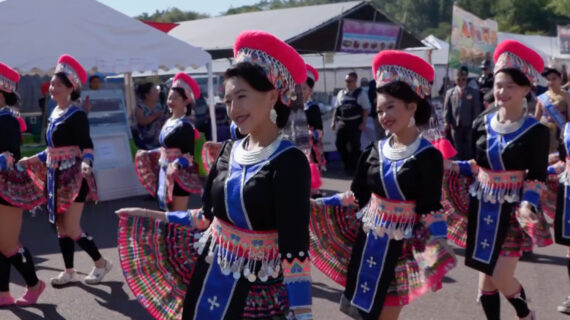
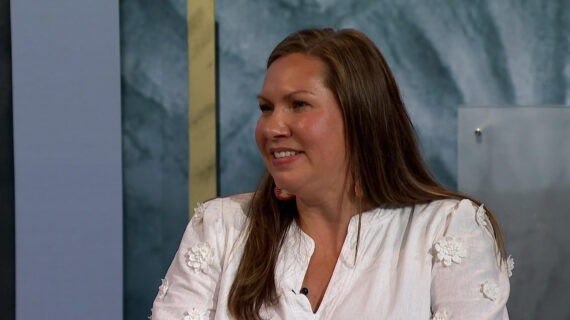

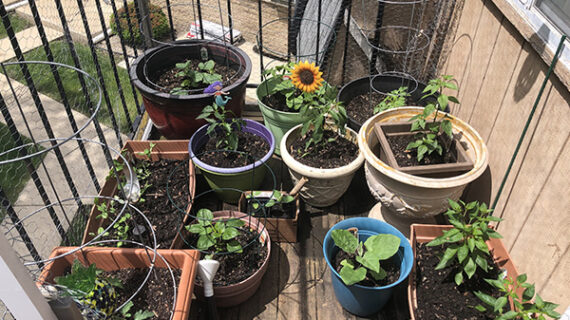

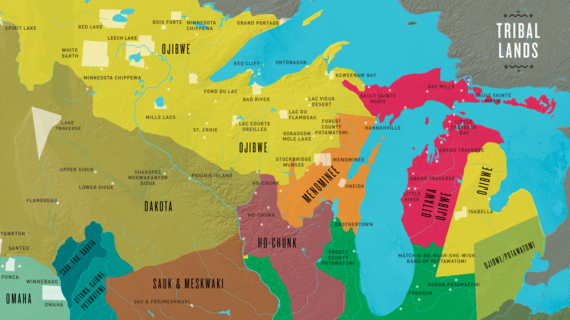
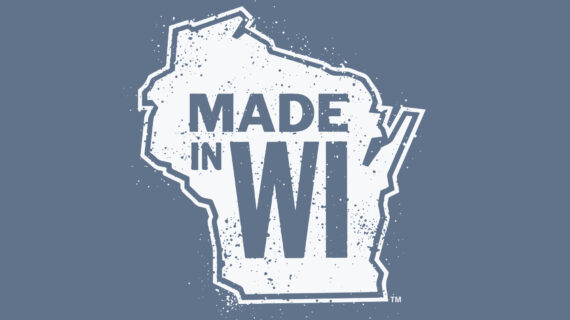
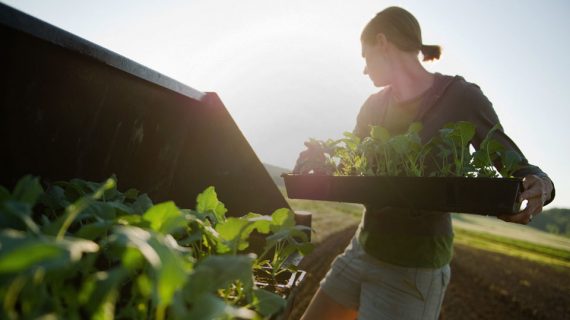


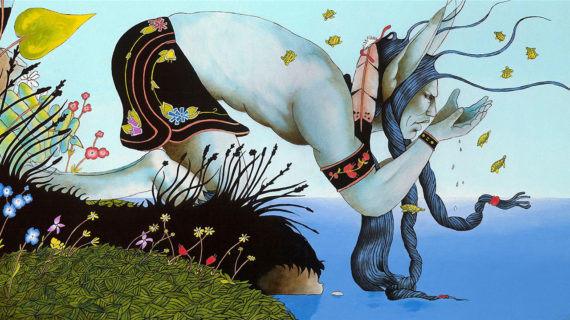

Follow Us